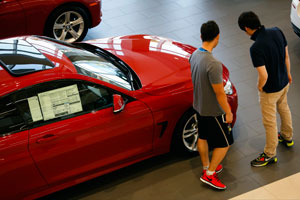Consumer Credit Surges on Loans for Automobiles

Consumer borrowing in the U.S. rose more than forecast in July as non-revolving loans including those for cars climbed by the most in three years.
The $26 billion increase in credit and exceeded the highest forecast in a Bloomberg survey and followed an $18.8 billion advance in June that was more than previously estimated, a report from the Federal Reserve in Washington showed.
Non-revolving loans, which include borrowing for autos and college tuition, climbed $20.6 billion, the biggest gain since July 2011. Credit-card lending rose for a fifth straight month.
A stronger job market and rising home values are giving households the confidence to take on debt to buy big-ticket items such as motor vehicles. Banks are also becoming more willing to lend, which could encourage more consumers to boost their spending, which makes up the biggest part of the economy.
“People are clearly starting to feel more confident, and we’re also probably seeing some pent-up demand,” said Matt Schulz, senior industry analyst in Austin, Texas, at CreditCards.com, an online credit-card marketplace. “As long as you get that slow and steady economic growth, it’s reasonable to think that these numbers will continue to grow.”
The July increase was the biggest since November 2001, after adjusting for breaks in the series due to changes in methodology, according to the Fed. It exceeded the $17.4 billion median forecast of 35 economists in the Bloomberg survey. Estimates ranged from increases of $14 billion to $23 billion.
The report doesn’t track mortgages, home-equity lines of credit and other debt secured by real estate.
The gain in credit probably extended into August as demand for cars accelerated. Motor vehicle sales soared last month to a 17.5 million annualized rate, the strongest since the beginning of 2006, according to data from Ward’s
Federal government lending to consumers, made up mostly of educational loans, increased $3.1 billion in July from the prior month before adjusting for seasonal variations.
Revolving credit, which includes credit-card balances, rose $5.4 billion after a $1.8 billion June increase, the figures showed. Credit card use has increased five straight months, the longest such stretch since the period ended April 2008.




